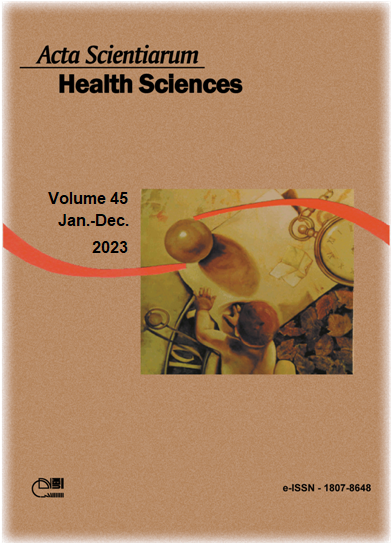Does Clonazepam induce salivary gland toxicity? A morphometric analysis of salivary glands in pregnant mice
Resumo
Physiological alterations in pregnancy may induce changes in salivary secretion and a predisposition to anxiety disorders. Clonazepam, a benzodiazepine, is recommended as the first choice for the treatment of anxiety disorders. To date, no studies have described the consequences of using this drug on the salivary glands of pregnant women. Therefore, the objective was to evaluate the alterations induced by exposure to Clonazepam in the salivary glands of pregnant mice. Twenty-two pregnant Swiss mice were divided into a control group (C) and a treated group (T), which received distilled water and 10 mg Kg-1 of Clonazepam, respectively, via gavage, daily, from the 5 to the 17th day of pregnancy. On the 18th day, euthanasia and collection of salivary glands were carried out, and the salivary glands were histologically processed and morphometrically analyzed under an optical microscope. The area, perimeter, and diameter of the acini and the thickness of the secretory ducts of each gland were measured. Parametric data (expressed as mean and standard deviation) were analyzed using the Student's t-test, and non-parametric data (expressed as median and interquartile range) using the Mann-Whitney test (p <0.05). Parotid glands’ acinar diameters (C: 44.1 ± 12.2 µm; T: 36.5 ± 7.8 µm; p =0.002) and ductal thicknesses (C: 16.9 [14.3-21.3] µm; T: 15.1 [13.4-16.3] µm; p =0.043) were statistically smaller in the T group than in the C group. No further alterations were found in other parameters from parotid glands, nor in submandibular and sublingual glands. It is concluded that Clonazepam induces morphological alterations in the parotid glands of pregnant mice. These alterations are probably associated with hyposalivation and xerostomia, already described as a common complaint among the users of benzodiazepines. Further studies are, therefore, suggested to assess the implications of these findings on pregnant women’s oral health.
Downloads
DECLARAÇÃO DE ORIGINALIDADE E DIREITOS AUTORAIS
Declaro que o presente artigo é original, não tendo sido submetido à publicação em qualquer outro periódico nacional ou internacional, quer seja em parte ou em sua totalidade.
Os direitos autorais pertencem exclusivamente aos autores. Os direitos de licenciamento utilizados pelo periódico é a licença Creative Commons Attribution 4.0 (CC BY 4.0): são permitidos o acompartilhamento (cópia e distribuição do material em qualqer meio ou formato) e adaptação (remix, transformação e criação de material a partir do conteúdo assim licenciado para quaisquer fins, inclusive comerciais.
Recomenda-se a leitura desse link para maiores informações sobre o tema: fornecimento de créditos e referências de forma correta, entre outros detalhes cruciais para uso adequado do material licenciado.























5.png)







